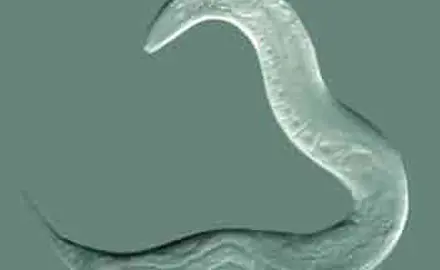Sediment Test Systems
Sediment ecotoxicity is determined using various organisms that live in contact with sediments. These assays are done as well at the Lausanne lab.
Chronic Toxicity Test with Chironomids
Chronic Toxicity Test with Chironomids
Test organism
- Harlequin Fly (Chironomus riparius)
Test principle
- In this test, the effect of chemicals and sediment samples on chironomid development and mortality is investigated.
- The animals are exposed to the samples for a period of 7 (AFNOR, 2004) or 10 (OECD, 2023 a,b) days for the growth test and for a period of 28 days for the emergence test (OECD, 2023 a,b).
- A whole life cycle toxicity test for spiked sediment (or water) at two concentrations is also available (OECD, 2010).
Analysed parameters
- Larval growth (length or weight)
- Mortality
- Emergence of the midges and sex ratio
- Reproduction (number and fertility of eggs)
Test duration
- 7/10 days or 28 days (twice as long for a 2-generation test)
Relevance
- Important to determine the sediment toxicity
- Benthic invertebrate, occurs in rivers and standing water bodies
- Dominant primary consumer and important prey organism
Guidelines and literature
- AFNOR XP T90-339-1 (2004). Qualité de l’eau. Détermination de la toxicité des sédiments d’eau douce vis-à-vis de Chironomus riparius. Partie 1 : Sédiments naturels
- OECD (2023a). Guideline for testing of chemicals 218: Sediment-water chironomid toxicity test using spiked sediment.
- OECD (2023b). Guideline for testing of chemicals 219: Sediment-water chironomid toxicity test using spiked water.
- OECD (2010). Guideline for testing of chemicals 233: Sediment-Water Chironomid Life-Cycle Toxicity Test Using Spiked Water or Spiked Sediment.
- ASTM (1994). Standard Guide for Conducting Sediment Toxicity Tests with Freshwater Invertebrates.
- Environnement Canada, 1997. Méthode d’essai biologique: essai de survie et de croissance des larves dulcicoles de chironomes (Chironomus tentans ou Chironomus riparius) dans les sédiments.
Acute Toxicity Test with Chironomids
Acute Toxicity Test with Chironomids
Test organism
- Harlequin Fly (Chironomus riparius)
Test principle
- This test investigates the effect of chemicals on the mortality of chironomid larvae. The test is performed during the water stage.
- The animals (1st larval stage) are exposed to the samples for a period of 1 to 2 days (OECD, 2011).
Analysed parameters
- Mortality
Test duration
- 1 to 2 days
Guidelines and literature
- Weltje L, Rufli H, Heimbach F, Wheeler J, Vervliet-Scheebaum M, Hamer M (2010). The chironomid acute toxicity test: Development of a new test system. Integr. Environ. Assess. Manag. 6:301-307.
- OECD (2011). Guideline for Testing of Chemicals 235. Chironomus sp., Acute Immobilisation Test.
Sediment Contact Test with Ostracods
Sediment Contact Test with Ostracods
Test organism
- Freshwater ostracods Heterocypris incongruens
Test principle
- The effect of chemicals on the mortality and growth of this epibenthic crustacean is determined after 6 days of exposure to spiked or naturally contaminated sediments.
Analysed parameters
- Growth, measured as length
Test duration
- 6 d
Relevance and advantages
- Ostracods are present in almost all aquatic environments, within the water column and on (and in) the sediment substrate. H. incongruens is a cosmopolitan ostracod species
- Standard test organism for determining the toxicity of fresh water sediments
- The test requires minimal sample volume for testing
- Similar sensitivity to other standard test systems
Guidelines and literature
- ISO 14371 (2012). Water quality - Determination of fresh water sediment toxicity to Heterocypris incongruens (Crustacea, Ostracoda)
- Chial-Belgis Z. Persoone G, Blaise C (2003) Cyst-based toxicity tests XVI––sensitivity comparison of the solid phase Heterocypris incongruens microbiotest with the Hyalella azteca and Chironomus riparius contact assays on freshwater sediments from Peninsula Harbour (Ontario, Canada). Chemopshere 52, 95-101
Sediment Contact Test with Nematodes

Sediment Contact Test with Nematodes

Test organism
- Freshwater nematode Caenorhabditis elegans
Test principle
- The effect of chemicals on the growth and reproduction of this endobenthic organism is determined after 4 days of exposure to spiked or naturally contaminated sediments.
Analysed parameters
- Growth
- Reproduction
Test duration
- 4 d
Relevance and advantages
- C. elegans is a widespread, free-living endobenthic nematode representative of nematode freshwater communities
- Standard test organism for determining the toxicity of fresh water sediments and soils
- The test requires minimal sample volume for testing.
Guidelines and literature
- ISO/DIS 10872 (2010). Water and soil quality — Determination of the toxic effect of sediment and soil samples on growth, fertility and reproduction of Caenorhabditis elegans (Nematoda)
- Haegerbaeumer, A., Hoss, S., Heininger, P., Traunspurger, W., 2018a. Is Caenorhabditis elegans representative of freshwater nematode species in toxicity testing? Environmental Science and Pollution Research 25, 2879-2888.
- Haegerbaeumer, A., Hoss, S., Heininger, P., Traunspurger, W., 2018b. Response of nematode communities to metals and PAHs in freshwater microcosms. Ecotoxicol Environ Saf 148, 244-253.

